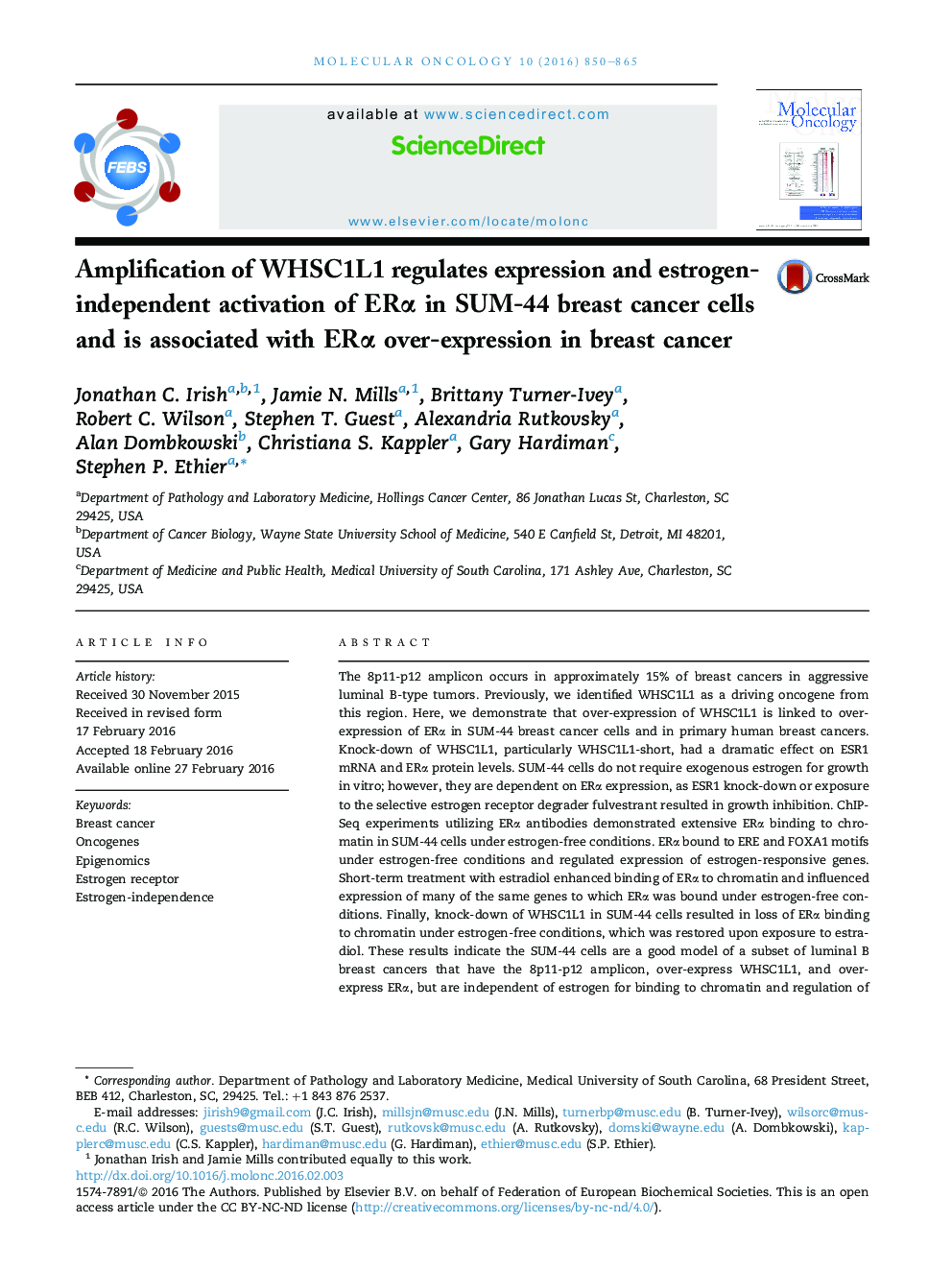| Article ID | Journal | Published Year | Pages | File Type |
|---|---|---|---|---|
| 10914521 | Molecular Oncology | 2016 | 16 Pages |
Abstract
The 8p11-p12 amplicon occurs in approximately 15% of breast cancers in aggressive luminal B-type tumors. Previously, we identified WHSC1L1 as a driving oncogene from this region. Here, we demonstrate that over-expression of WHSC1L1 is linked to over-expression of ERα in SUM-44 breast cancer cells and in primary human breast cancers. Knock-down of WHSC1L1, particularly WHSC1L1-short, had a dramatic effect on ESR1 mRNA and ERα protein levels. SUM-44 cells do not require exogenous estrogen for growth in vitro; however, they are dependent on ERα expression, as ESR1 knock-down or exposure to the selective estrogen receptor degrader fulvestrant resulted in growth inhibition. ChIP-Seq experiments utilizing ERα antibodies demonstrated extensive ERα binding to chromatin in SUM-44 cells under estrogen-free conditions. ERα bound to ERE and FOXA1 motifs under estrogen-free conditions and regulated expression of estrogen-responsive genes. Short-term treatment with estradiol enhanced binding of ERα to chromatin and influenced expression of many of the same genes to which ERα was bound under estrogen-free conditions. Finally, knock-down of WHSC1L1 in SUM-44 cells resulted in loss of ERα binding to chromatin under estrogen-free conditions, which was restored upon exposure to estradiol. These results indicate the SUM-44 cells are a good model of a subset of luminal B breast cancers that have the 8p11-p12 amplicon, over-express WHSC1L1, and over-express ERα, but are independent of estrogen for binding to chromatin and regulation of gene expression. Breast cancers such as these, that are dependent on ERα activity but independent of estradiol, are a major cause of breast cancer mortality.
Related Topics
Life Sciences
Biochemistry, Genetics and Molecular Biology
Cancer Research
Authors
Jonathan C. Irish, Jamie N. Mills, Brittany Turner-Ivey, Robert C. Wilson, Stephen T. Guest, Alexandria Rutkovsky, Alan Dombkowski, Christiana S. Kappler, Gary Hardiman, Stephen P. Ethier,
